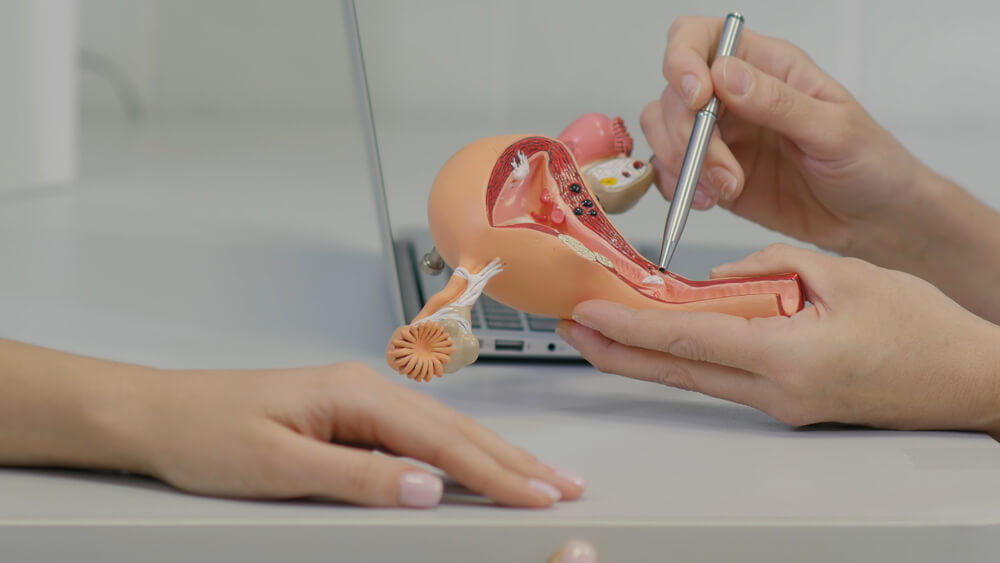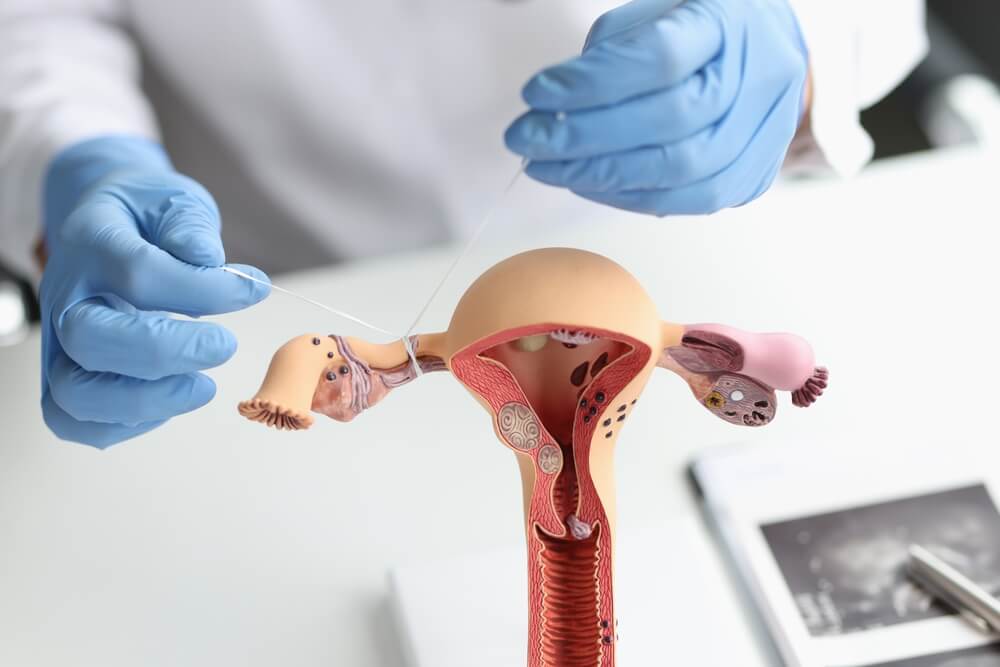You’ve likely landed on this article on female vasectomy because you’re looking for permanent birth control that’s effective and hormone-free. If you don’t want to have children in the future and you want a solution that won’t interfere with your sex drive and with sex, a female vasectomy may be the right choice for you. But how does this permanent birth control work? What is the difference between tubal ligation vs. vasectomy? Moreover, if you choose female vasectomy, how long does the tubal ligation recovery time take? You’ll find the expert-approved answers and much more below.
Remember, health is wealth. If you are considering a sterilization procedure, look for healthcare professionals with years of experience and fantastic results.
If this sounds good, let’s begin this article on permanent birth control or female sterilization. Keep on scrolling for the details.
What is a Female Vasectomy?
Female vasectomy is another term for female sterilization. In essence, female vasectomy refers to the procedure of permanently preventing pregnancy by blocking or sealing the fallopian tubes. By doing this, the sperm won’t reach the eggs, and fertilization will become impossible.
According to the facts, a female vasectomy is over ninety-nine percent effective at preventing unwanted pregnancy.
Also, unlike some other types of permanent birth control, a female vasectomy will not interfere with your sex drive and the quality of sexual intercourse with your partner.
Moreover, a female vasectomy won’t affect the hormone levels in your body, and you will still have your regular monthly cycles. That said, women who undergo a female vasectomy will still require contraception use three months post-surgery (depending on the sterilization type).
For accurate details, always consult your healthcare specialist. Ensure that your doctor is highly skilled and trained in permanent birth control. If you’re looking for a professional with years of experience in the field, we recommend Dr. Deborah Siman.

Tubal Ligation vs. Vasectomy: What’s the Difference?
The difference between tubal ligation vs. vasectomy is simple. Women undergo tubal ligation, while a vasectomy is sterilization for men. Nowadays, tubal ligation is also referred to as a “female vasectomy.” Here are some must-know facts about tubal ligation vs. vasectomy.
When a woman gets tubal ligation, the doctor begins by making an incision in the abdominal wall, finding the fallopian tube, and closing it. This can be done by cutting and tying off the fallopian tube or clamping and cauterizing it. Alternatively, the doctor can keep the fallopian tube whole but close it with a ring, band, or clip.
In a nutshell, between tubal ligation vs. vasectomy, the latter is more straightfroward. Namely, tubal ligation requires a general anesthetic and a few incisions with a scalpel.
In the case of a vasectomy, there are two main types, an open-ended and a close vasectomy. The doctor leaves the end connected to the testicles open in an open-ended vasectomy, allowing the sperm to escape into the intra-scrotal area. Here, the sperm dies and is reabsorbed. Since the end linked to the prostate gland is closed, the man becomes sterile. Typically, an open-ended vasectomy is preferred, as it has fewer complications.
A local anesthetic is needed for a vasectomy.
Which one is more effective, tubal ligation vs. vasectomy? In short, both are effective procedures. After tubal ligation, the woman is sterile, and she does not require added tests.
Surgical vs. Non-Surgical Female Sterilization
If you’re looking for permanent birth control, female sterilization or a female vasectomy could be the right choice. Tubal ligation is a popular surgical procedure in which the doctor cuts or seals the woman’s fallopian tubes. Sometimes, this procedure is mentioned as “getting the tubes tied.” Usually, the doctor performs a laparoscopy to perform this procedure. Alternatively, you can get your tubes tied after cesarean delivery (or C-section) or vaginal delivery.
You can also opt for nonsurgical permanent birth control procedures. The nonsurgical procedures involve the use of devices put into the fallopian tubes. The doctor will place the devices into the fallopian tube via the vagina and the uterus. If you want to avoid incisions, opting for nonsurgical sterilization may be perfect for you.
How is Female Vasectomy Performed?
An experienced doctor always performs a female vasectomy. However, depending on the sterilization procedure, you may need to go to a hospital or the doctor’s office.
Tubal ligation typically begins with administering anesthesia. Next, your medical expert will inflate the abdomen with gas and start by making a tiny incision to reach the reproductive organs.
As mentioned, this procedure is referred to as laparoscopy. During this process, the doctor will locate and seal the fallopian tubes. They can perform this by cutting and folding the fallopian tubes, removing sections of the fallopian tube, or blocking the tubes with clips, rings, or bands.
Specific procedures may need one instrument and a single incision, whereas others can require two. Always consult your healthcare specialist for guidance.
Tubal Ligation Recovery: What to Expect
Female sterilization can be one hundred percent effective when performed correctly by an experienced medical professional. However, in some cases, around two to ten out of a thousand women may get pregnant following a tubal ligation procedure.
Following surgery, experts monitor women every fifteen minutes for an hour to ensure recovery is going well and that there are zero complications. In most cases, you can go home the same day, typically within only two hours after the procedure. Tubal ligation recovery normally takes a minimum of two days, while five days may be needed in some cases.
The medical expert will often ask you to come back for a follow-up appointment one week following the procedure. By doing this, the doctor will make sure that the tubal ligation recovery is smooth and complication-free.
Remember, we are all different and unique. Your tubal ligation recovery may take less or more time. Check with your doctor, especially if you have questions and concerns related to female vasectomy.
Benefits and Disadvantages of Female Vasectomy
As with any procedure, female vasectomy has outstanding benefits and some drawbacks. Above all, female sterilization is ideal for women looking for a highly effective and permanent birth control option. In most cases, a female vasectomy is perfectly safe for most patients, and the failure rate is meager.
The results are very effective without the risk of complications. Namely, some birth control methods such as the pill or an intrauterine device can cause adverse effects such as hormone disbalance.
When it comes to the female vasectomy, you won’t have to fear these side effects. Female sterilization may be the right choice if you are on the hunt for a permanent birth control option that won’t affect your hormone levels, your menstrual cycles, or your libido. Based on the evidence, female sterilization may also reduce your risk of developing ovarian cancer.
On the downside, if you are planning to have children in the future, female sterilization is not a fit for you. Although some tubal ligation procedures are possibly reversible, they don’t always work.
Overall, side effects are only possible if you choose a dodgy clinic and an inexperienced doctor. Therefore, always make sure that you choose your healthcare provider carefully.

Book an Appointment with Us Today
You’ve made up your mind, and you’re ready for a female vasectomy. Book a schedule with us today and choose only the best professionals in healthcare. Your health is our priority, and the results are guaranteed.


